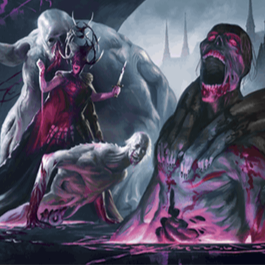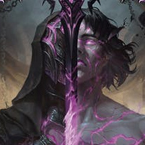Last weekend’s Pro Tour in Lille, France was an incredible experience. As my first major TCG tournament beyond ProQuest level, I was immensely excited to attend it. But in the weeks before the event began, I was equally preparing myself for the dreaded 0-3 drop that can arise from an unlucky weekend playing against some of the greatest players in the world. I’m humbled to have been in the Top 8 with the likes of legendary players like Pablo Pintor, Pheano Black, and Matthew Foulkes, and incredibly proud to have reached the semi-finals.
Today, I’d like to share some of the most important lessons I learned from my experience at the Pro Tour. There’s surely much more one can take from an event of this magnitude but, on the train home from Lille, these were the six things that seemed most important to me.
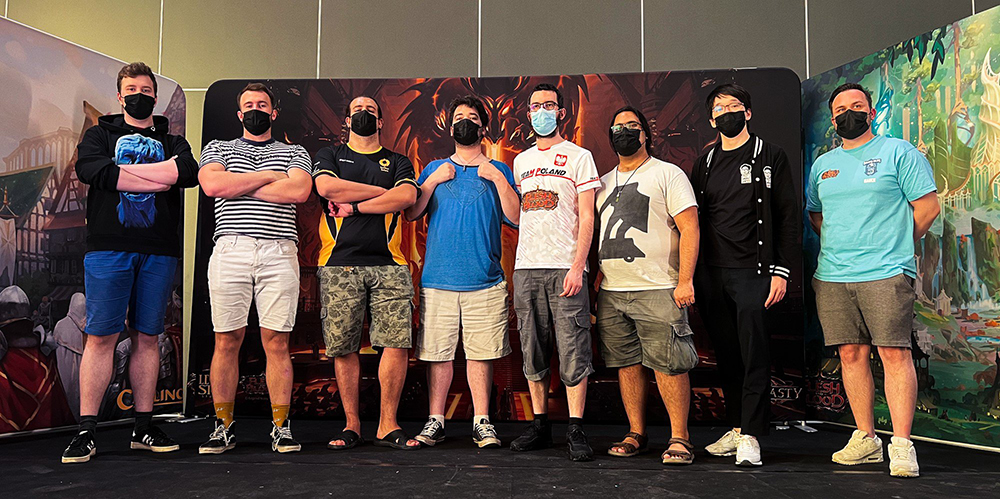
Shahmir Samee, third from right.
1. Practice, Practice, Practice
Let’s start with the obvious one: you need to be adept at playing Flesh and Blood. This may seem intimidating, but it is far from an unachievable skill! I started playing with the launch of Tales of Aria, which means I’ve only been playing for one third of this game’s lifespan so far. That’s not a lot, compared to many seasoned players who have been there since the beginning. If I can reach this point, so can you!
Effective practice entails engagement with the game both while playing and away from gameplay. In the former category, that means playing against similarly skilled or more skilled opponents and discussing aspects of the game to understand what went well, and what can be improved. In the latter, it means analyzing others’ play with more complete information on the game and matchup, forming and revising your core heuristics of understanding the game, and learning from others who have lessons to give about the game (and you’re already in one of the best places to learn from them!)
Mark Chamberlain’s excellent article series on forming and maintaining a Flesh and Blood team is a great starting place to help you find likeminded players who want to improve. While I don’t have a formalized “team”, per se, my handful of close friends who practiced with me deep into the night were essential to my success over the weekend.
2. Prepare Multiple Decks for Tournaments
My next lesson had its seeds sown long before I even arrived in France. After the ProQuest season concluded and it became very apparent that Bravo, Star of the Show and Chane, Bound by Shadow would reach Living Legend status, I started talking to my friends and testing partners about what I might play for the Pro Tour. Briar and Viserai were early ideas we floated, given the strength of Runeblades in the metagame and my experience with their card pool and strategy. We started refining a Briar list during Road to Nationals season after seeing her consistent strength against Prism, while Viserai had fallen short of my expectations (no doubt because I put less time and effort into understanding why he wasn’t doing as well as I’d like).

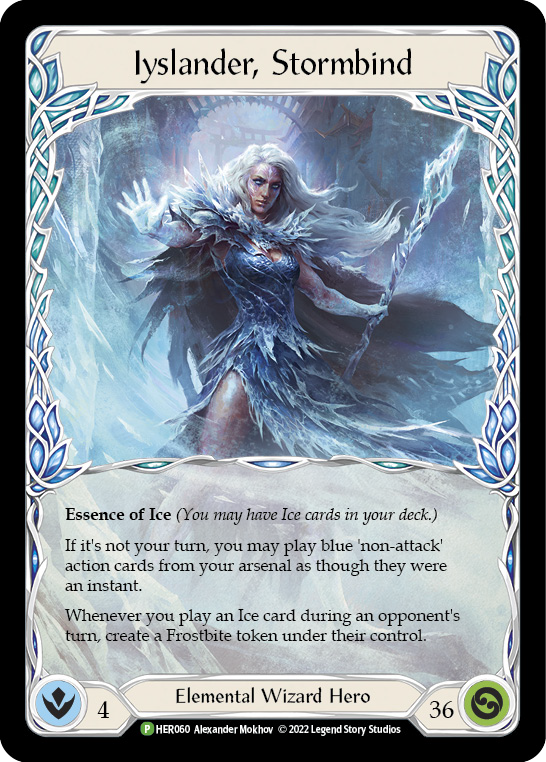
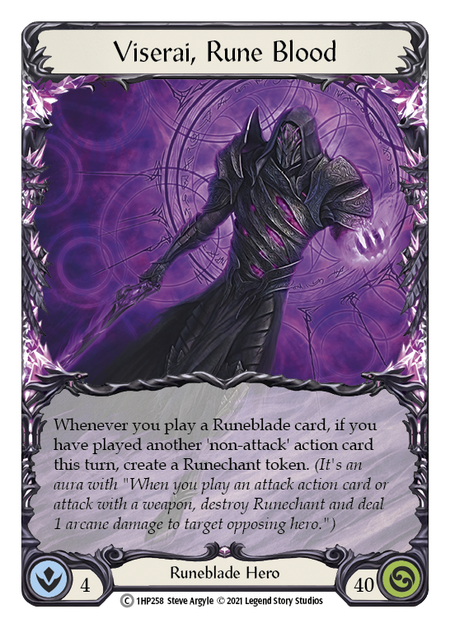
Between those seasons, we had the launch of Uprising create a new upset in the meta: Fai came out of the gates swinging, and few were prepared for his sheer damage output. It felt like we were heading into another aggressive metagame, which pulled me towards playing Iyslander (who I’ve previously written about on Rathe Times). My build had translated very well from Blitz to Classic Constructed in the early days of the meta, and I eventually locked in playing her about a week before the Pro Tour.
Testing against my own Briar build and friends’ Viserai builds was going excellently, even if the Prism matchup was rough, to say the least. But two days before the Pro Tour, I hosted a little testing session at my house with a few friends. In that time, I decided to think about, and test against, the worst (realistic) case scenario that could help Runeblades get an edge against me: three pieces of Arcane Barrier 1, Fyendal’s Spring Tunic, and two copies of Oasis Respite (red). During those testing games, it became clear that even without Oasis Respite, Arcane Barrier 3 made the matchup significantly more challenging; leaking important damage through became much more difficult, and the moderate blue count of around 22 in Viserai and Briar was enough to frequently pitch a blue on my turn to prevent important damage while keeping a blue to fund their turn. Even Katsu was able to fatigue me sometimes with this strategy!
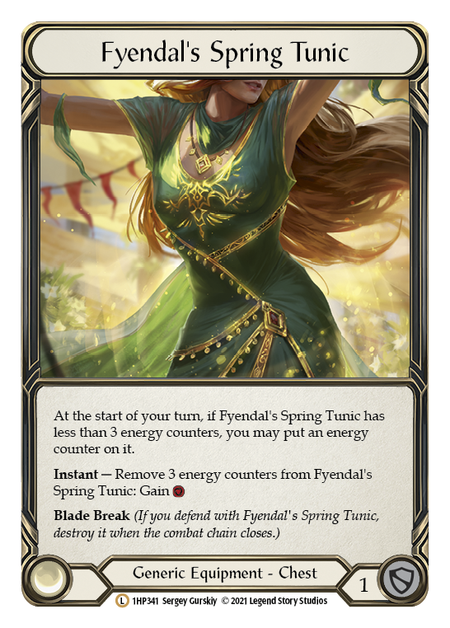
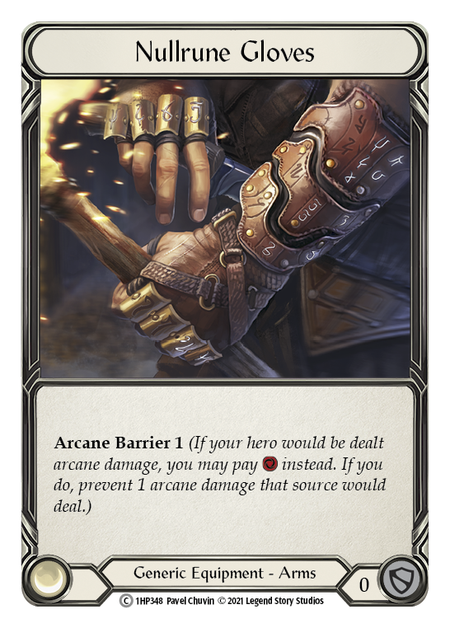
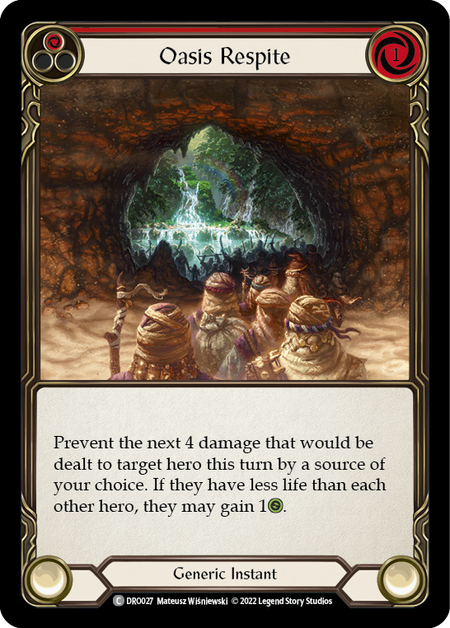
While I certainly could have adjusted my deck to account for this discovery, doing so two days before the event seemed too destablizing. I chalked it up to bad luck and moved on… Until I had the exact same experience in games I played with friends on the train to Lille!
It became clear that this was a real issue that I hadn’t considered, and now it was too late to solve it cleanly. I had a choice: proceed with Iyslander as planned and accept that I had an awful Prism matchup and a wildly variable Runeblade matchup based on how much Arcane Barrier their deck had; or pivot back to my old faithful Briar deck which I’d had plenty of reps on, understood deeply, and which had fewer weak matchups.
After seeking advice from trusted friends and colleagues (including my editor here, Alex Truell), I’m glad I made the right call and switched.
Constructed metagames change; deck technology evolves; and bans or suspensions can throw a spanner in the works of even the greatest plans. If you want to be prepared to do the best you can at a big tournament, and can afford to have multiple deck options, always prepare a backup plan.
3. Learn the Quirks of your Draft
On the other side of Pro Tour preparation was learning Uprising draft. Thankfully, with Road to Nationals season featuring Uprising draft and many friends buying sealed product we could casually draft from, there were many opportunities to practice. Without turning this article into a deep dive on Uprising Draft- you can find that from Tyler Horspool elsewhere on the site- I can summarise my strategy as “stay open for 3-5 picks with strong Generics or unclassed cards (of which there are quite a few), then choose a hero based on the signals you read.” Not a particularly innovative or insightful strategy, but it works well for most Flesh and Blood sets, Uprising included. But a strategy like this was particularly important to drafting Uprising at the Pro Tour.
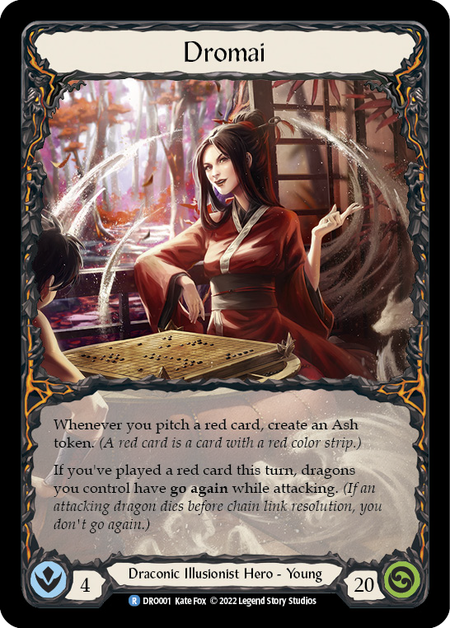


One of our first observations of the draft environment was that Fai seemed particularly strong compared to Dromai and Iyslander (though thankfully, not to the point of complete imbalance), so many players gravitated towards him during a draft. It isn’t uncommon to see draft pods with four or even five Fai players, which leaves Dromai and Iyslander more open for those willing to draft and play them; many Iyslander and Dromai drafters have a higher quality decklist because of this.
This isn’t a particularly deep observation, and many players noticed this trend, which (I believe) meant that many players at the Pro Tour no doubt sought to exploit this to their advantage by seeking to be one of few Iyslander or Dromai drafters in their pod. I heard many horror stories of pods with a 4-3-1 hero split (often with just one Iyslander or Dromai in that split) rather than the 3-3-2 split one would expect from players listening to draft signals (especially since Uprising has much clearer draft signals than a set like Tales of Aria). This significantly increased the importance of taking flexible early picks rather than forcing a hero in pack one, since it was almost equally likely that you could end up with many other players on the “just force Fai” trend, or with those who sought to exploit that trend.
Many of my friends competing in the Pro Tour built strong decks despite being the third or even fourth person in their pod drafting the same hero, only to find themselves paired against the one Iyslander or Fai in the pod who has a deck that surpasses their own- by far- due to lack of competition for strong cards in the draft. Being able to pivot to be the second Iyslander in the pod, rather than the third Dromai, on Pick 8 in my day two draft certainly saved me from a worse record in that draft.
This might be a lesson that’s too specific to Uprising draft, but every set has its quirks, and I have no doubt that future sets will too. Understanding what makes this set different from others you’ve drafted, and tailoring your draft or play strategy to account for those differences, will put you in a much better position than those who haven’t understood those differences.
4. Take Care of Yourself and Stay Positive
During a long day of tournament play, there’s many things that can get you down: you have a bad draft; you have a great draft and an awful first match; you make a misplay that costs you a game; you get hungry or tired… The list goes on. Flesh and Blood is an incredibly complex game that demands a lot of your focus, and it’s hard to focus when something is bothering you. Set yourself up in every way you can to be at your best before and during every game you play.
In the day two draft I mentioned earlier, I played against Pablo Pintor in the second round. The matchup was an Iyslander mirror, and Pablo was the only other Iyslander in my pod (seemingly settling on Iyslander early in pack 1 while I pivoted later), so I assumed his deck was stronger than mine which made me quite intimidated before starting. He won the die roll and chose to go first, compounding my nerves, and we began play.
The game progressed with some back and forth, but I gained significant ground in the midgame thanks to a pair of Oasis Respites (red). I stripped most of his equipment while keeping most of my own until, finally, I took him to 1 life and started my turn with a 4-card hand. I pushed for lethal with an Encase; he responded with an Aether Icevein (blue) from arsenal to kill me in response, and I managed to avoid lethal damage with 2 resources floating. He activated his Waning Moon to push for lethal again. I, of course, should have activated my own in response to kill him, but (ashamed as I am to say it, being a seasoned Iyslander player), I didn’t see the line and couldn’t prevent enough damage to survive.
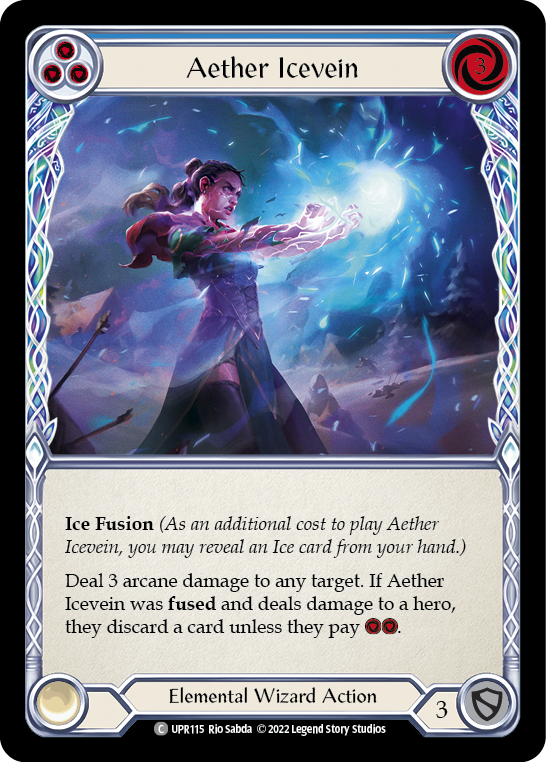
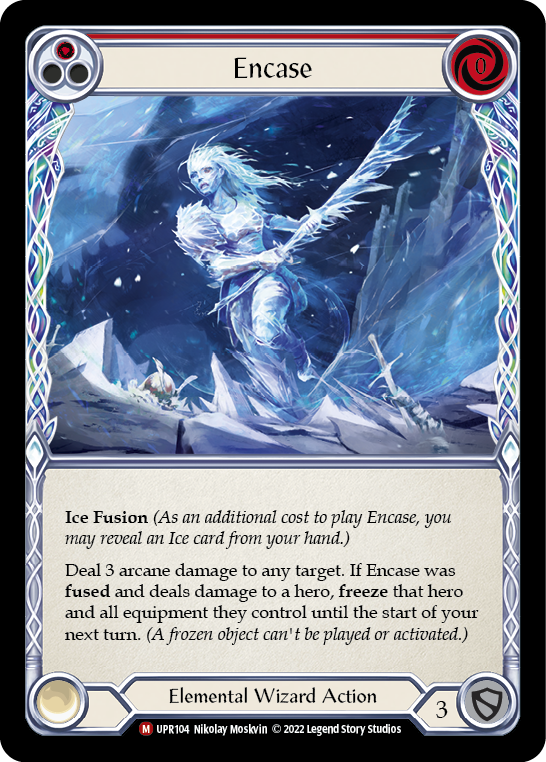
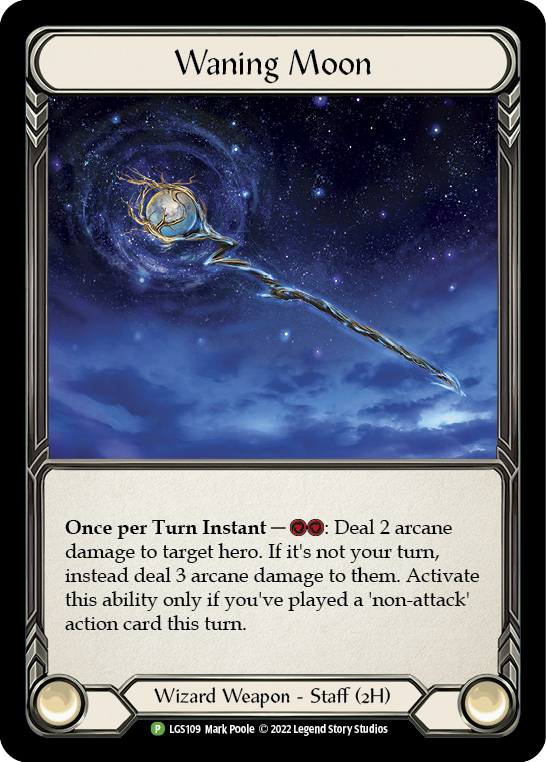
Within seconds of my death, a friend from the crowd watching our match says “dude, didn’t you have him?” and explained my punt. My heart sank. I was equal parts amused by the simplicity of my mistake, and furious with myself for making it. To be clear, this isn’t to detract from Pablo’s victory – his play was excellent throughout and he thoroughly deserved the win – but I was frustrated with myself for stumbling at the last hurdle of a challenging match.
When my initial anger faded, though, I reminded myself that I am human and make mistakes, that it was not a mistake I was going to make again, and that I still had a great chance of doing well in this tournament. Grounding myself at that moment prepared me for what would perhaps be my most challenging match of the weekend (more on that later).
Putting yourself in the best position to play well applies to almost every aspect of what you do during a tournament weekend. Ensuring that you’re well fed and rested, focused on what you’re doing rather than distracted or stressed by other things, tightens your play and clarifies your decision making. If you can, ask a friend to help- anything from grabbing lunch for you to providing emotional support.
Above all, remember that you’re playing a game which is meant to be fun as well as challenging!
5. Know When to Slow Down
In almost every game of Flesh and Blood, there comes a pivotal moment of decision that can determine the direction of the match. It could be down a single play – “what do I block with here?” – or something deeper like a change of strategy – “should I be pushing aggression now or controlling my opponent’s most powerful turns and/or board state?” – and many factors may determine your ultimate decision. It’s important to give yourself enough time to make those decisions… which also means managing your time effectively during games with a time limit!
After my draft match against Pablo, I was paired against fellow UK-based player and Rathe Times writer Sean Knowelden on Dromai. At a 7-2 record and hot off the heels of my loss against Pablo, a loss in this round could lock me out of Top 8, depending on tiebreakers at the end of the day. I was reasonably well equipped for the matchup, with a Singe (red and blue) and Fyendal’s Fighting Spirit (yellow) as matchup-specific tech, and I won the die roll choosing to go first.
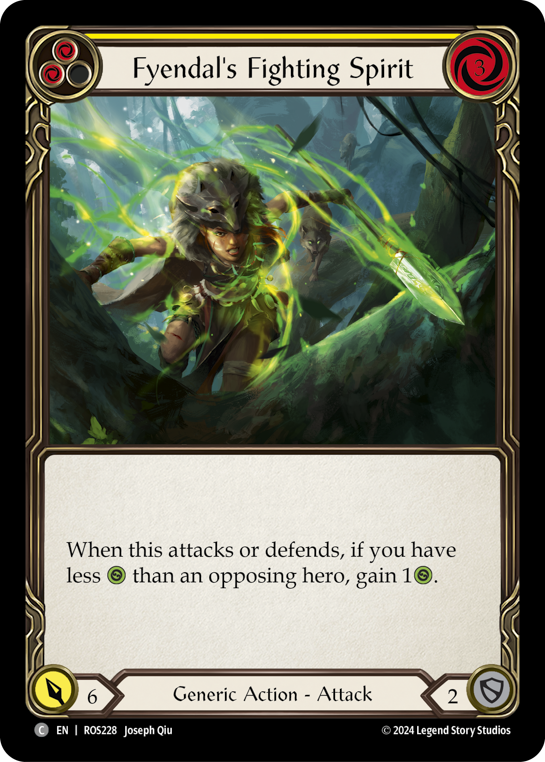
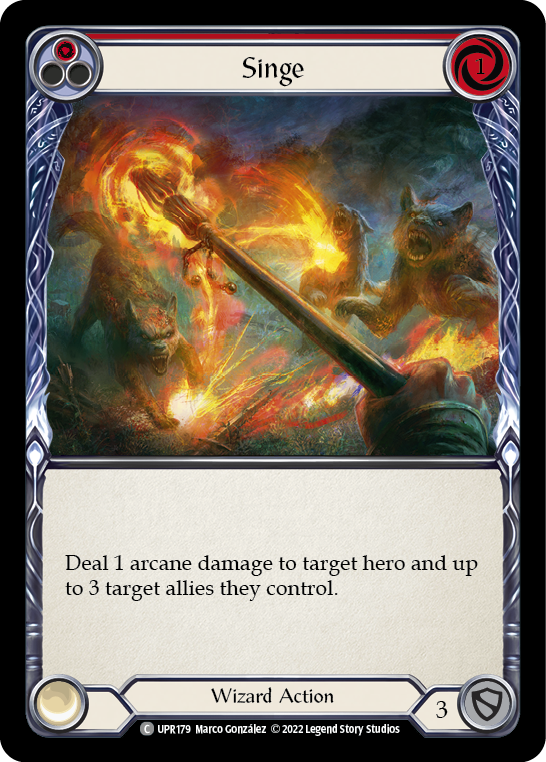
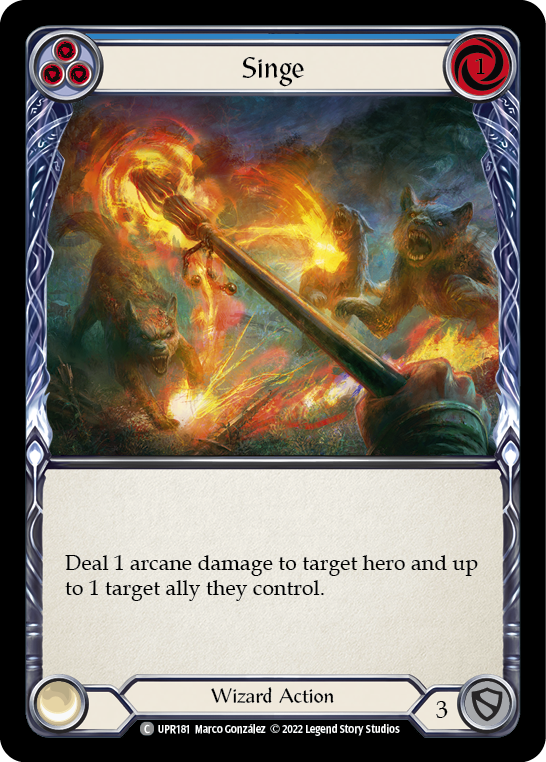
In trying to push some arcane damage on turn one, I allowed Sean to create two Ash tokens and only leaked one damage for the trouble. I didn’t even have a blue in my opening hand to arsenal! He immediately Quelled with and activated his Silken Form on that turn, as well as his Helio’s Mitre, leaving him with little equipment but a strong board state going into his first turn.
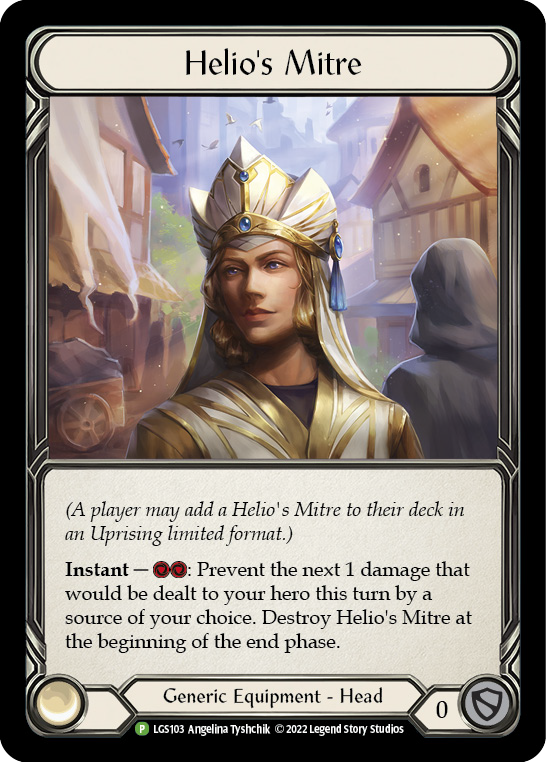
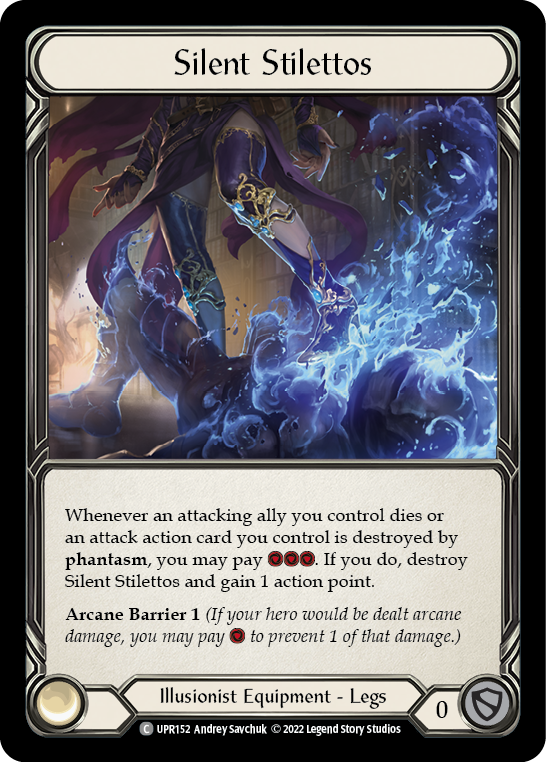
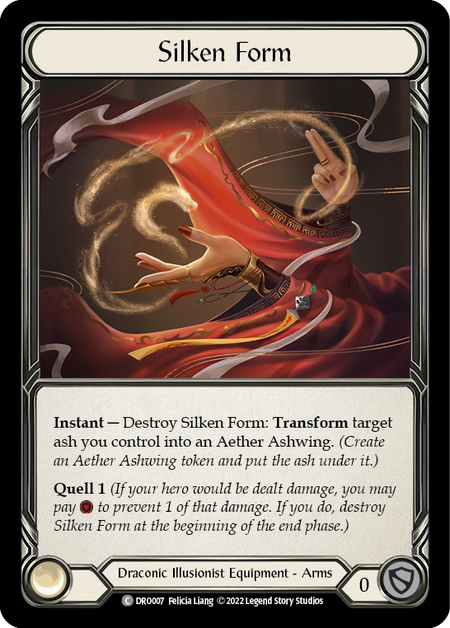
His retaliation was swift and strong, taking me to 9 but generating no additional Ash in the process. I spent my next turn playing a fused Aether Icevein (yellow) and activating my Waning Moon, both of which were fully blocked out thanks to an Oasis Respite (yellow) and Sean’s Silent Stilettos and lone Aether Ashwing.
In that turn, it became immediately apparent that Sean had already established most of the tools he needed to survive my onslaught and win this match in a war of attrition. That said, he only had so many copies of Oasis Respite (in fact, it turned out he only had the one), so I could choose to just bulldoze through those and maximize damage output at Dromai. As I drew up and considered my blocks going into his next turn, I thought about this decision for a while, ultimately deciding that his life total was far too high to ignore the value of his board state.
My strategy pivoted to “look for opportunities to end Sean’s turn by killing an attacking dragon, and run him out of Ash,” which seemed achievable given how little he was generating through his first two turns. Slowly I began to turn the tide- despite Sean playing a Healing Balm (red) that had me very concerned whether I even had enough damage in my deck to win- and I re-evaluated how cautious or aggressive I could afford to be with my card in arsenal each turn. Did I need to save it to kill a dragon this turn? Or could I afford to send it at Dromai?
As Sean ran out of Ashwings and Ashes, he was forced to pitch Reds on my own turn to Arcane Barrier to keep fueling his own gameplan, which stopped him from being to prevent most of my damage. At this point, I was much more willing to block efficiently rather than conservatively, hoping to keep tall sources of Arcane damage on my own turn while saving a blue arcane damage source ready to stop a dangerous turn. The game was incredibly close, with me ending at 4 cards in my deck and 3 life- after gaining 4 due to my two Oasis Respites and two Fyendal’s Fighting Spirits (one Yellow, one Blue).
I probably spent too long on some of those iterative decisions in the mid-game, which ultimately took the game to overtime. There’s no doubt I got a little lucky in being able to take down Sean in time from such a commanding lead in the early game, but taking the time to consider my broad strategy as well as individual plays was also key to my ultimate success.
On the other hand, in an untimed Top 8 game, take the time that you have frequently; so long as you are clearly maintaining a reasonable average pace in the game, there is no penalty for deeply considering plays that you think may be critical! Even if the play seems obvious, consider what the implications of it are: what is the worst thing that could punish you for taking this line of play, or for not taking it? You might not have complete information, and will sometimes be punished by even the most considered decision, but knowing that you considered that decision as thoroughly as possible will reassure you that you made the right play, even if it doesn't turn out perfectly.
6. Remember to Experience Everything
Regardless of your performance in your main event(s) of choice, remember that events of this scale have so much more to experience than just games of Flesh and Blood. Some of my favorite moments of the weekend were away from the gameplay tables- from marvelling at the incredible cosplayers competing in Day 2’s cosplay competition, to meeting some of the people who make the game itself; from incredible artists like Federico Musetti to the legendary James White himself, to jamming some Blitz in the evening with friends.
While Flesh and Blood is a game that does consistently reward expertise, it is still a game with variance. Sometimes, you’ll have an unlucky run at the start of your event, or bad beats towards the end just when you needed things to go right. Either way, it’s important to make the weekend an enjoyable experience that you’ll remember fondly regardless of your result. Taking in everything the event and venue has to offer will help ensure that you feel it was a weekend well spent.
I look forward to seeing many of you at future events like UK Nationals and (hopefully) the World Championships! Come say hi, I’d love to meet you!


